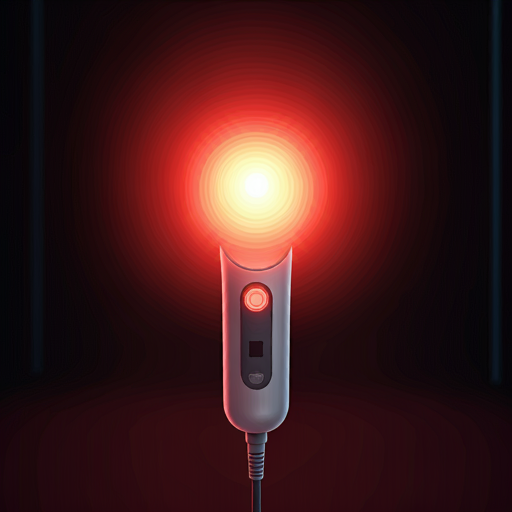WHAT, WHY, HOW RED LIGHT THERAPY

Red light therapy (RLT), also known as low-level light therapy (LLLT), uses red or near-infrared light to penetrate the skin and tissues to stimulate cellular processes. Here's how and why it works, and why it can produce such positive effects on pain, recovery, and rejuvenation: How Red Light Therapy Works
- Cellular Energy Boost:
- Red and near-infrared light wavelengths (typically 600–1000 nm) are absorbed by the mitochondria, the powerhouses of the cell.
- This light increases the production of adenosine triphosphate (ATP), which is the energy currency of cells, enhancing cellular function.
- Anti-Inflammatory Effects:
- The light reduces inflammation by modulating pro-inflammatory cytokines and increasing anti-inflammatory mediators.
- It enhances blood flow to affected areas, promoting better oxygen and nutrient delivery.
- Collagen Production:
- Red light stimulates fibroblasts to produce more collagen, a key structural protein in skin and connective tissues, which helps with rejuvenation and tissue repair.
- Pain Modulation:
- It influences pain pathways by releasing endorphins and modulating nerve signaling, helping to alleviate chronic pain.
- Cellular Repair and Regeneration:
- The therapy accelerates the repair of damaged tissues by improving cellular proliferation and migration, particularly in the skin and musculoskeletal system.
Benefits of Red Light Therapy
- Pain Relief:
- By reducing inflammation and promoting tissue repair, RLT can help relieve chronic pain from conditions like arthritis, fibromyalgia, and back pain.
- Faster Recovery:
- Athletes and individuals recovering from injuries benefit from enhanced tissue healing and reduced muscle soreness after exercise.
- Skin Rejuvenation:
- Boosts collagen production, reducing wrinkles, fine lines, and signs of aging.
- Improves skin tone and texture, and may help with conditions like acne, psoriasis, and rosacea.
- Improved Circulation:
- Increases blood flow, which helps deliver oxygen and nutrients to tissues, aiding in faster recovery and better skin health.
- Enhanced Mitochondrial Function:
- Mitochondrial health is crucial for overall cellular function, and RLT can help combat fatigue and improve energy levels.
Why It Has Great Results
- Non-Invasive and Safe:
- RLT is a gentle therapy that does not involve surgery, medication, or harmful radiation, making it accessible and low-risk.
- Broad Applicability:
- It addresses fundamental cellular processes, so its benefits extend to a wide range of conditions and areas, from skin health to chronic pain and recovery.
- Cumulative Effects:
- Regular sessions can provide lasting improvements as cells and tissues adapt and repair over time.
Red light therapy is backed by growing scientific evidence, but it's important to ensure the device used delivers light at the right wavelengths and intensity. While it shows great promise, results can vary depending on the condition treated and the individual. Consulting a healthcare professional for specific applications is always recommended.
WHAT DOES IT MEAN REALLY?
Let’s break down some of the key terms I used about cells and tissues and explain their role in the body, why they are important, and how they connect to red light therapy.
1. Mitochondria
- What it is: Organelles inside cells often referred to as the "powerhouses" of the cell.
- What it does: They produce energy in the form of ATP (adenosine triphosphate), which fuels almost all cellular activities.
- Why it’s important: Without ATP, cells cannot function properly. Healthy mitochondria are essential for energy production, muscle movement, and overall cellular health. Red light therapy stimulates mitochondria to produce more ATP, which can enhance energy and repair damaged cells.
2. ATP (Adenosine Triphosphate)
- What it is: The primary energy carrier in cells.
- What it does: ATP powers all cellular functions, such as muscle contractions, nerve impulses, and biochemical reactions.
- Why it’s important: Without ATP, cells (and the body) would stop working. By increasing ATP production, red light therapy boosts cellular energy, speeding up healing and recovery.
3. Collagen
- What it is: A protein that makes up about 30% of the body’s protein content, found in skin, tendons, ligaments, and other connective tissues.
- What it does: It provides structure, strength, and elasticity to tissues.
- Why it’s important: Collagen keeps skin firm and youthful, helps wounds heal, and strengthens joints and bones. Red light therapy promotes collagen production, which is why it’s used for skin rejuvenation and improving joint health.
4. Cytokines
- What they are: Small proteins released by cells, particularly immune cells, that act as messengers to regulate inflammation and immune responses.
- What they do: Cytokines can either promote inflammation (pro-inflammatory cytokines) to fight infection or reduce inflammation (anti-inflammatory cytokines) to aid in healing.
- Why they’re important: Balanced cytokine activity is crucial for health. Too much inflammation can lead to pain and chronic disease. Red light therapy can help balance cytokines, reducing excessive inflammation.
5. Fibroblasts
- What they are: Specialized cells in connective tissue.
- What they do: Fibroblasts produce collagen and other fibers that maintain the structural framework of tissues.
- Why they’re important: Fibroblasts are key to wound healing and maintaining the skin’s elasticity. Stimulating fibroblasts with red light therapy helps repair skin and connective tissues, reducing wrinkles and scars.
6. Inflammation
- What it is: The body’s natural response to injury or infection, involving redness, heat, swelling, and pain.
- What it does: Inflammation helps the body protect and heal itself by signaling immune cells to the affected area.
- Why it’s important: While short-term inflammation is protective, chronic inflammation can cause pain and damage tissues. Red light therapy helps reduce chronic inflammation, promoting healing and comfort.
7. Blood Flow (Circulation)
- What it is: The movement of blood through the body’s blood vessels.
- What it does: Blood delivers oxygen, nutrients, and hormones to tissues and removes waste products.
- Why it’s important: Proper circulation is essential for healing and overall health. Red light therapy improves blood flow, which accelerates recovery and enhances skin health.
Why Understanding These Terms Matters
These biological components and processes are fundamental to how our bodies function and repair themselves. Red light therapy works by targeting these natural mechanisms, enhancing their efficiency, and promoting better health and healing. Understanding these terms can help you see how and why treatments like red light therapy can have widespread benefits.
Mark on Facebook #redlighttherapyuk
Stay tuned for more insights and tips on wellness and weight management! Have a look at Amazon, our store will reopen soon with much better prices, but if you can't wait!
